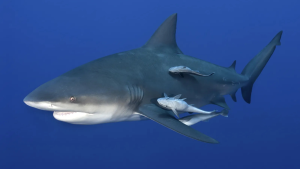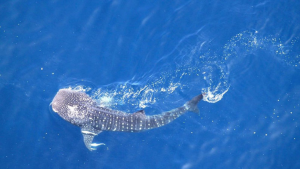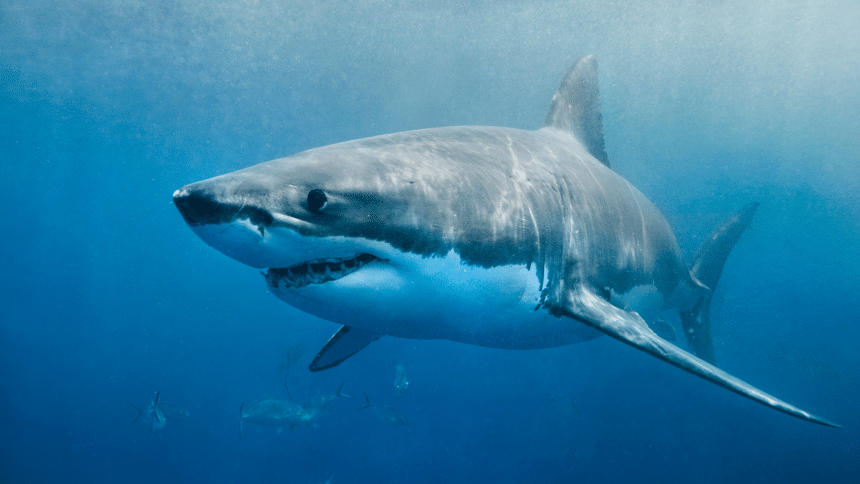Shark Week is underway, and with the annual Discovery Channel event, many people begin to question which of the apex predators are swimming close to home.
According to Dr. Jill Hendon with the Center for Fisheries Research and Development at the University of Southern Mississippi, waters off the Magnolia State have “some of the greatest diversity” in all of the Gulf when it comes to different shark species swimming around.
“There are about nine species that typically hang out in the Mississippi Sound and surrounding barrier islands, but there are many that inhabit the Gulf of Mexico as a whole,” the shark expert said.
The list includes inshore mainstays such as the Atlantic sharpnose, black tips, spinner, and bull sharks. The Atlantic sharpnose is the most prominent in the region and only gets to be about three feet long, while the bull shark can reach lengths greater than 10 feet.

Further offshore, various species of hammerheads can be found – some of which can grow as long as 14 feet. Tiger, blacknose, and finetooth sharks are also no stranger to the area.
“We’ve got quite a few that like to hang out in our deeper waters,” Hendon said. “They feel comfortable here.”

For anyone who’s ever watched Shark Week, they know that the great white is often a main character of the TV event that draws millions of viewers each year. Hendon said the popular predator can often be spotted traversing Mississippi waters when searching for food.
However, with a lack of mammal prey such as seals and sea lions, great whites generally travel through in quick fashion.
“We absolutely do get great whites,” Hendon said. “They typically stay a little bit further out and offshore and are primarily associated with cooler, deeper waters. Because they’re an apex predator, they’ve got a pretty hefty diet to sustain, so there aren’t going to be many of them in a specific area just because the environment can’t handle the food load.”
Another shark Hendon and her team at USM are keeping tabs on is widely considered the gentle giant of the sea: the whale shark. These plankton-eating creatures can grow up to 32 feet long and have recently been seen swimming through Mississippi waters going from Louisiana to Florida.
“A lot of people don’t realize we have whale sharks in our offshore waters. It is the largest fish in the ocean, and we know very little about them,” she said. “We are in an active tagging scenario with them, because we used to find them primarily off Ewing Bank in Louisiana and we’re now seeing them more frequently in the eastern portion of Gulf waters. We’re trying to understand some of their dynamics and why the shifts are occurring.”

Hendon said that while sharks do live off beaches such as Biloxi and Gulfport and barrier islands like Ship and Horn, their presence is no reason to draw a line in the sand and not get in the water.
Since 1837, only four unprovoked shark attacks have been recorded in the Mississippi Sound. Hendon believes fear of sharks is “natural,” but the secret to keeping that number low is simple: “Just keep an eye out and keep your distance. If you’re swimming and you see a fin, I would just move out of the way. Don’t panic, and swim away.”
For fisherman, Hendon said remove all bait from your pockets before getting in the water. According to her, sharks don’t necessarily want to attack humans as part of a “feeding frenzy.” Instead, most attacks can be attributed to fear, curiosity, or misidentifying a human for a usual diet item.
Shark enthusiasts who want to hear more from Hendon will have a chance to do so at the Mississippi Aquarium on Saturday, July 26, and Sunday, July 27. As part of the Gulfport aquarium’s “Shark Weekend” event, Hendon and fellow researchers from USM will be available to answer questions and provide fin-tastic facts on the ecosystem-shaping swimmers.
“We hope all of you are able to join us for ‘Shark Weekend’ at our Mississippi Aquarium. We will be there with all things sharks and we would love to chat with all of the shark-lovers out there,” she said.
Those who would rather learn about sharks from the comfort of their couches can tune in to Discovery Channel all week long. New programming that has already made waves includes “Dancing with the Sharks,” where divers descended to the ocean floor and used chum to turn sharks into toothy tangoers, and “In the Eye of the Storm: Shark Storm,” where eyewitnesses and victim accounts were provided from a 2024 breakout of attacks off the coasts of Florida and Texas.
Tuesday’s slate begins at 7 p.m. CT and is headlined by “Great White Northern Invasion,” “How To Survive A Shark Attack,” and “Black Mako of the Abyss.” The full schedule for Shark Week 2025 can be found here.








